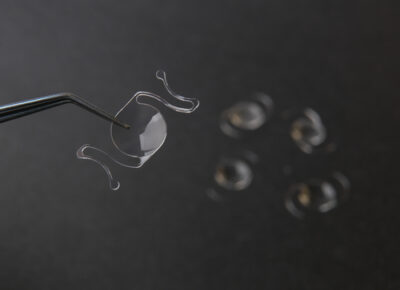Are you tired of relying on glasses and contact lenses to see every day? If you have a refractive error like nearsightedness, farsightedness, or astigmatism, you likely need glasses or contacts in order to see clearly.
Visual aids like contact lenses and glasses aren’t perfect and can often get in the way. Laser vision correction is a procedure that can allow you to reduce your dependence on contact lenses and glasses.

You’ve probably heard of LASIK, which is one of the most popular laser vision correction surgery. But it isn’t the only option.
There are also other options, like PRK. Keep reading to learn more about the laser vision correction options available!
LASIK
LASIK is an acronym for Laser-Assisted In Situ Keratomileusis. This procedure is a refractive laser eye surgery, meaning it’s designed to correct refractive errors, including nearsightedness, farsightedness, and astigmatism.
To correct your natural refractive error, your LASIK surgeon will use a laser to reshape your cornea. The cornea is the clear dome at the front of your eye.

Light passes through the cornea and bends, or refracts, before it hits your retina. To experience clear vision, light needs to land directly on your retina.
When the eye is too long or too short, or if the cornea is even slightly misshapen, the light may focus in front or behind the retina, causing a refractive error. LASIK surgery corrects refractive errors by correcting the shape of the cornea, which can alter where the light focuses in your eye.
LASIK is performed using two lasers. The first laser used by your LASIK surgeon is the femtosecond laser, which makes a flap in your cornea.
After creating the flap, your LASIK surgeon will use a second laser, called an excimer laser, to reshape the corneal tissue under this flap. This process will correct your specific refractive error.
Once your cornea is reshaped, your LASIK surgeon will replace the flap and position it where it acts as a natural bandage that protects your eye as it heals. In order to get LASIK, you will need to qualify as a candidate for the procedure.
The only way to determine if you are a candidate for LASIK is to visit your eye doctor at Sugiki Portis Eye Center for a consultation. In order to qualify as a candidate, your cornea must be thick enough to accommodate a corneal flap.
If your cornea is too thin, LASIK won’t be safe. In this case, your eye doctor may recommend a different laser vision correction procedure, like PRK.
PRK

PRK, which stands for Photo-Refractive Keratotomy, is a refractive laser eye procedure that’s very similar to LASIK. PRK is just as effective as LASIK and is a good option for patients with thinner corneas.
PRK uses an excimer laser to change the shape of your cornea, just like LASIK. One of the most significant differences between the two is that PRK doesn’t require a corneal flap.
Instead, the thin outer layer of the cornea, called the epithelium, is removed with a chemical scrub. The excimer laser then removes tissue from the cornea directly.
After PRK surgery, your PRK surgeon will place bandage contact lenses on your eyes to protect them while the epithelium regrows, a process that takes about two weeks. The final results for PRK and LASIK are comparable, with the vast majority of patients happy with their results.
If you don’t qualify for LASIK, PRK is undoubtedly a great alternative.
Which Option Is Right for Me?

Before you are able to schedule any refractive procedure, you will need to qualify as a candidate. There are various factors that may qualify or disqualify you as a candidate.
During your consultation at Sugiki Portis Eye Center, your eye doctor will thoroughly evaluate your eyes, including performing in-depth testing and measurements. Your eye doctor will ask you about your vision goals to assist them in determining which procedure may be best for you.
Most people will qualify as a candidate for either LASIK or PRK. However, your eye doctor may recommend another option for vision correction that does not involve the use of lasers.
This procedure is called Refractive Lens Exchange, or RLE. During RLE, your eye doctor will remove the natural lens in your eye that helps refract light and replace it with an artificial lens.
This new lens will correct your natural refractive error. RLE is also an excellent option for vision correction.
One thing that differentiates RLE from LASIK and PRK is that the RLE procedure can be reversed. Also, if you have RLE, you never have to worry about developing cataracts, as they cannot form in artificial lenses.
Do you want to learn more about laser vision correction surgery and which one may be right for you? Schedule an appointment today for a commitment-free consultation!





